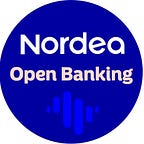FX automation is no longer a luxury; it’s a strategic necessity
In the past, spreadsheets and manual processes ruled the day when it came to the daily tasks of FX and liquidity management. Now, all that is changing as rule-based robots, sophisticated algorithms and so-called application programming interfaces (APIs) are taking over.
In my work on Nordea Markets’ FX Automation and Digitalisation team, I see these new tools completely changing the game for treasury and finance professionals, and the pace of change is only accelerating.
This couldn’t come at a better time as many companies that I meet are drowning in manual tasks while also under pressure to cut costs and staff. This is particularly true for treasury and accounting functions. Anything that can streamline, automate and optimise internal processes is high on every managers agenda.
For example, take a company with 12 different currency accounts and different banking relationships. It still happens that some poor person at that company sit with multiple card readers and check throughout the day whether money has landed on the accounts, and if so, a currency conversion is executed to bring the money back to their home currency. It takes a lot of time to log in, check the balances and trade. On top of that, you have to deal with the volatility in the market.
To solve this pain point for both big and small companies we deep dived into the issue with some of our high profile customers and together built AutoFX. We then tested, adjusted, improved and scaled. AutoFX is a currency robot that uses a pre-defined framework to trade based on account balances. For example, a company with most incoming payments in US dollars but most expenses in Sweden could set up a rule for the robot to sell all dollars to Swedish kroner at 5pm every day. With AutoFX, accounts can be swept or topped up as SPOT trades or overnight swaps.
Many companies that I know want more flexibility in setting up the framework for what triggers a trade. That’s where APIs come into play and I am thrilled over the recent developments in this space. But what is an API, really? An API is a software intermediary allowing two applications or systems to talk to each other. They can be integrated into a company’s own systems and software so that FX becomes a part of daily business, taken care of automatically. This allows FX risk to be managed in real time, for example, by letting invoice, sales, order or payment data trigger an FX trade. APIs also allow for trading a broader spectrum of products with the tenor of choice, from SPOT trades to hedging via swaps and forwards.
I think most companies see the benefits of automated trading when it fits the payment flows, exposures and internal processes. However, as automation inevitably can result in more trades, many customers have told me that they are afraid that the accounting and internal reporting becomes too cumbersome on their side. Therefore, I am very happy that we recently launched our FX Trade Retriever API, which now automates all post-trade reporting and accounting. Through a seamless integration between trading and bookkeeping, companies can enjoy fully automated trading from the beginning to the end. You can still achieve best execution and are also guaranteed the same price you would get on our other trading platforms or channels.
These solutions are addressing many of our customers’ pain points, freeing up treasurers and other financial professionals to focus on activities that add more value to the business. But if you ask me, they’re also doing more than just providing relief from the mundane and repetitive daily FX tasks. Rule-based FX trading also minimises the risk of human error and the company’s exposure to individual speculation. It ensures that currency flows are traded in line with the company’s strategy and policy at all times, regardless if somebody is sick or change jobs. This is particularly important for companies where the difference between profit and loss boil down to how well they manage their FX exposures.
What’s more, it’s easy to get started with the API integration. One customer, with technical competencies in house, for example, was able to move from a multi-dealer platform to trading with APIs in one day. Are you interested in trying it out yourself? You can start testing your workflow immediately on our Open Banking developer portal.
If you are not yet convinced or just want to learn more about how you can benefit from automating your FX trading, you are welcome to reach out to me.
About the author:
Patrik is a Senior Sales Manager and Advisor at Nordea Markets, focusing on automation and digitalisation in the FX and payment space. He gets a kick out of helping both startups and large multinational companies reach their true global potential, while still managing risks properly and efficiently. He is a strong believer in technology and thinks that superior products and customer experience comes from collaboration between banks, corporates, fintechs and 3rd parties. In his other life, he is a professional football player scoring a hat trick for Arsenal FC in the Champions League final.
